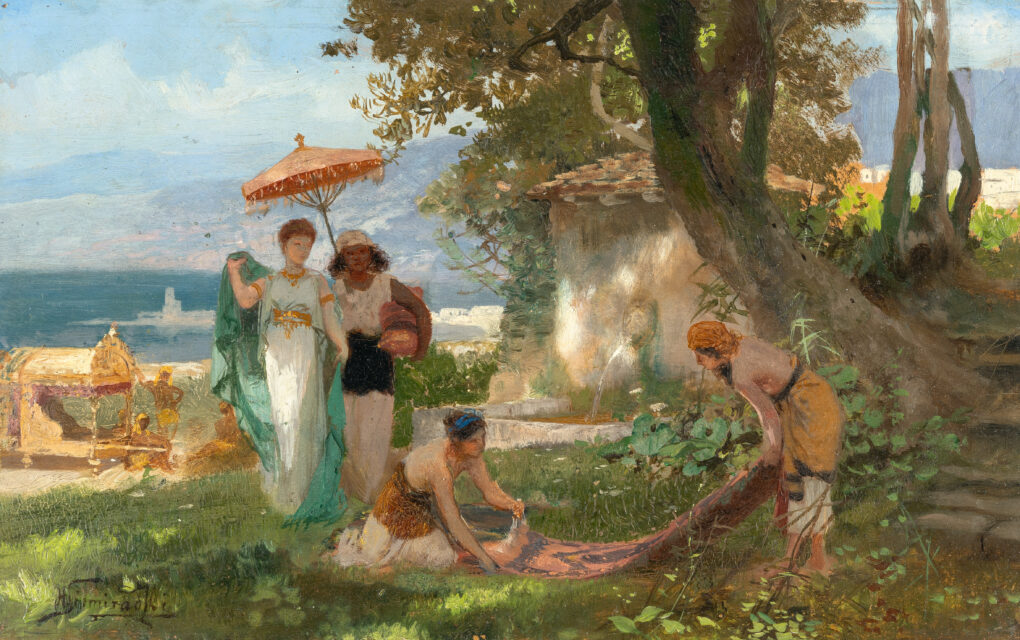Recto: Composition – Verso: Nu
Details
This work is registered in the online database of the Schweizerischen Instituts für Kunstwissenschaft (SIK-ISEA) under the number 98033 (https://www.sik-isea.ch/de-ch/). Provenance: private collection, Genf; private collection, Europa.
Descrizione
• Painted on both sides with motifs from important phases within the artist’s oeuvre
• Geometric and futuristic composition from his 1920s Parisian period, with a finely rendered female nude, painted after Buchet’s return to Switzerland
• Gustave Buchet was among the most important artists of the Swiss avant-garde
Buchet studied at the art school in Geneva. After his first stay in Paris in the winter of 1910/11, in 1915, together with Maurice Barraud and other artists, he founded the group “Le Falot”, which was oriented towards French modernism – as a reaction to the art of Ferdinand Hodler. During this time, Buchet was closely linked to Cubism and Futurism as well as the Dada movement; his early Futurist works were first exhibited in Geneva in 1918. However, his engagement with the Genevan avant-garde and his participation in Dadaist actions in the winter of 1919/20 landed him in artistic and social isolation, and his studio was even visited by the police. Therefore, he moved to Paris in 1920, broke away from the Dada influences and exhibited with the Cubist artist group “Section d’Or” in Paris, Brussels and Antwerp. His painting became significantly more geometric and abstract. The futuristic composition on one side of this canvas was also created during this time. In addition to fine art, Buchet also worked as an illustrator, founded a fashion house, and designed advertising as well as stage sets and costumes for the theater. In 1924 he exhibited at the Salon des Indépendants, followed by important solo exhibitions in 1926 and 1929, which consolidated his artistic success. Buchet increasingly turned to the form of Purism propagated by Le Corbusier and Amédée Ozenfant, but from 1931 onwards he gradually returned to a more traditional figurative formal vocabulary and primarily painted landscape motifs and nudes. In 1939 he settled in Lausanne and founded the first Salon de Printemps there in 1941. Buchet then used the back of his abstract-futuristic composition from Paris to depict this finely modeled female nude, which is characteristic of this phase of his oeuvre. After the end of the war, Buchet traveled to Provence, Tuscany and Ticino. Since the mid-1950s, his paintings were characterized by the dominance of colour. Gustave Buchet’s geometric compositions from his time in Paris in the 1920s were only exhibited in Switzerland in the 1950s and it would take until the 1970s for art critics and collectors to recognize Buchet’s place in the historical avant-garde. Today his works can be found in museums in Aargau, Geneva, Lausanne, Winterthur and Zurich, among others.
* Tutte le informazioni includono la commissione a carico dell'acquirente (27%) senza IVA e senza garanzia. Salvo errori.
** Tutte le informazioni più la commissione a carico dell'acquirente e l'IVA e senza garanzia. Salvo errori.
*** Con riserva: L'offerta è stata accettata al di sotto del limite. L'acquisizione dell'opera potrebbe essere ancora possibile nella nostra vendita post-asta.
R = Le opere d'arte regolarmente tassate
N = Opere d'arte soggette a tassazione differenziata e provenienti da un paese non UE
Non è consentita la riproduzione e la distribuzione privata o commerciale di tutte le illustrazioni delle opere esposte nell'archivio della mostra e dell'asta. Tutti i diritti riservati.


